Words and Images in the Art Studio
Our current exhibition Out of the Box: The Graphic Novel Comes of Age features the work of 10 artists telling stories through graphic novels. I recently presented a workshop related to Out of the Box, and I had the opportunity to look back and reflect on past art studio projects. I realized that there are many ways that we have encouraged storytelling through bringing together text and image, techniques I would like to share in this blog post.
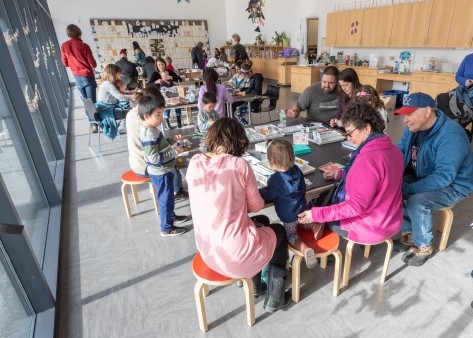
As I looked back at our projects I noticed that, while we rarely ask guests to sit down and tell a story using both words and images, there are ways that we design projects to encourage storytelling through a combination of words and images. The visual cues around the room, the prompts we provide, and the forms that the materials take, all provide inspiration and organizing structures that invite storytelling.
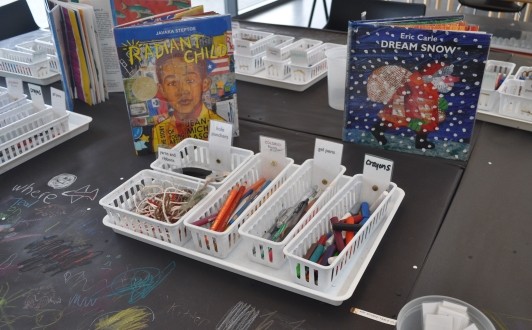
To start with, there are picture books displayed across the room. These are powerful examples of words and images coming together, and they are a constant source of inspiration in the Art Studio. Looking more closely at graphic novels as part of our research around Out of the Box got us thinking about how illustrators use sequencing, panels, typography, and innovative book design to tell stories. We have expanded our Art Studio library to include more graphic novels as a result of this exhibition and have discovered exciting connections between picture books and graphic novels.
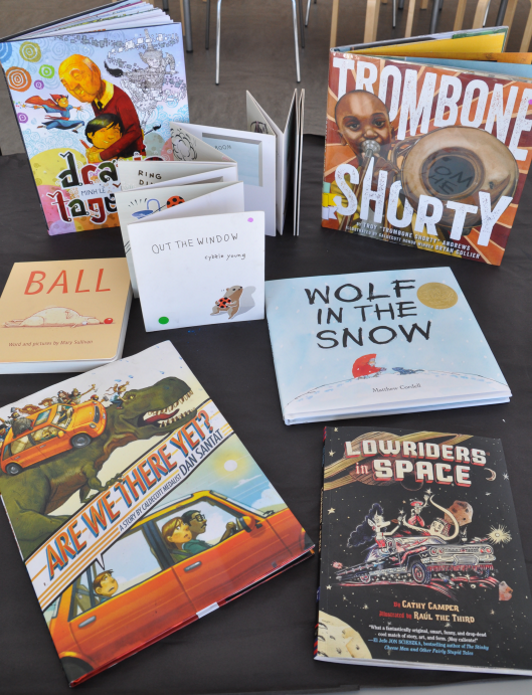
Sharing books with innovative illustration and design is one way we encourage storytelling in the Art Studio. Another way we create space for storytelling is through prompts or idea starters. We hope to provide a friendly space for everyone to experiment with materials, however, we know that it can be challenging to start a project with a blank piece of paper. Drawing also can feel intimidating when approaching it with an expectation of technical mastery. So the invitation or prompt we create, as well as the way materials are prepared, is an important part of fostering a sense of playful experimentation and curiosity when it comes to telling stories visually.
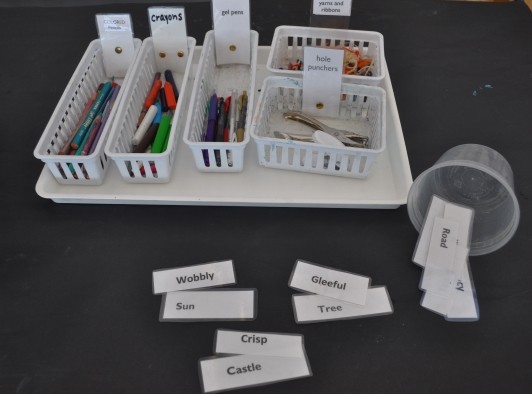
For example, in one drawing project we provided laminated cards and invited guests to select two or more words cards (often in pairs consisting of an adjective and a noun) at random to generate ideas. Drawing a “wobbly sun” or a “queasy tree” is not only humorous and fun, but it invites the artist to create something that conveys an idea, and possibly the start of a story – how did that truck get so queasy? Why does the sun wobble? - without a focus on rendering a realistic image.
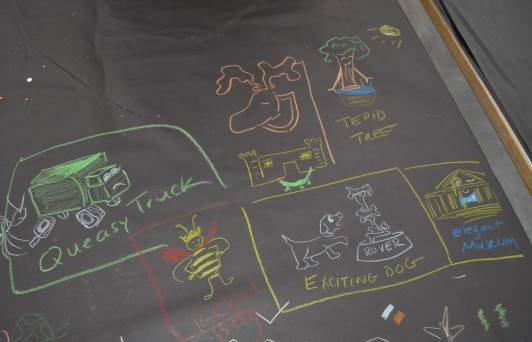
We have also used the act of scribbling and doodling as a starting point for ideas. We constantly see ideas and stories being played out on the large sheets of paper that we use to cover the Art Studio tables. There is something about the informal and shared quality of a table cover that invites free association in a way that sometimes a blank piece of drawing paper does not. Another story-starter we have used involves inviting guests to participate in a doodle game, where a scribble on a page is turned into something else. Starting with a line or mark that someone else has made not only avoids the intimidation of a blank piece of paper, but it also pushes ideas in a potentially different direction, giving rise to new characters, settings, or modes of expression that may not have happened otherwise.

We have found that the form of a book, (its size, shape, special features, etc.) can provide both a structure for organizing ideas, and help to generate new ideas. Recently Art Studio team member Terra blogged about her project featuring tunnel books. Terra described how tunnel books allow the layering of images to create depth. Exploring the tunnel book form, guests created scenes with a sense of place, perspective, and drama. Many chose to incorporate both words and images in their tunnel book to tell their story.
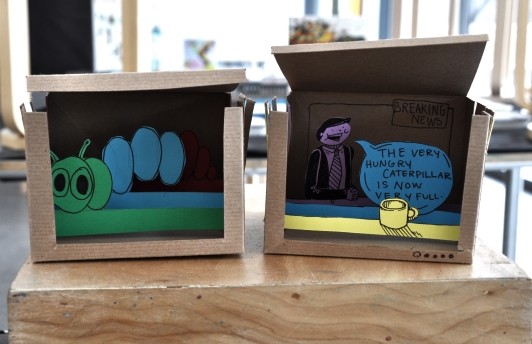
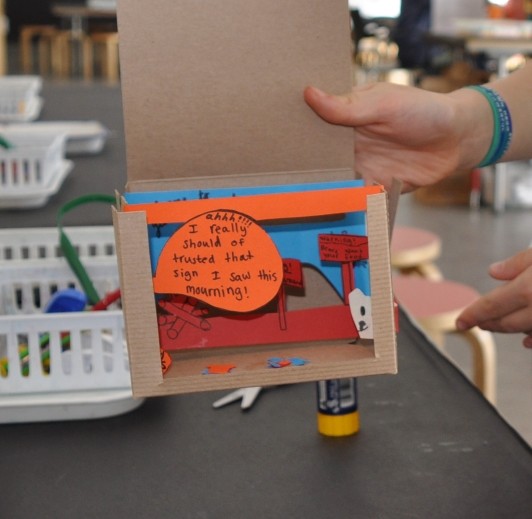
We also keep returning to the accordion book form in the Art Studio because it provides an excellent structure to include sculptural elements in a book, such as pop-ups and lift flaps. Accordion folds also offer an opportunity to play with sequencing and narrative as you can see the whole scene at once or have it revealed page by page.
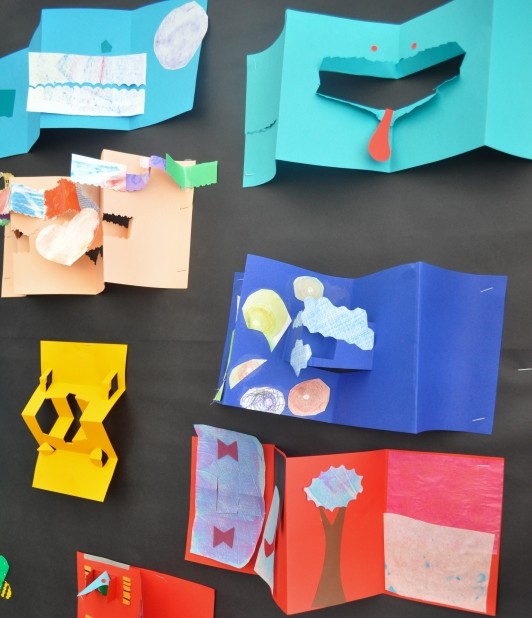
Folio books, created by papers folded in half and then bound by yarn and string, have inspired sequential narratives to develop across multiple pages through text and image. Guests can add pages as their story develops and control the length and lay-out of their book.

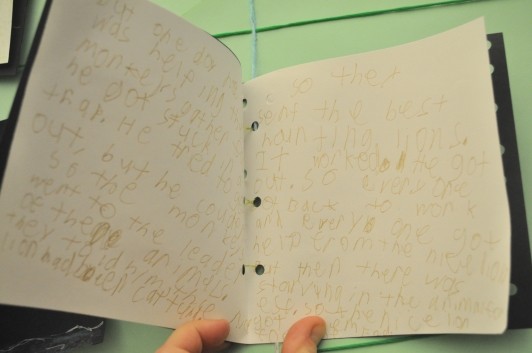

While we’ve explored many different techniques to encourage storytelling such as engaging drawing prompts, exploring different book forms, and displaying inspirational picture books, we’ll still continue to look for new ways to encourage the creation of stories. Do you have a favorite technique to foster storytelling?

